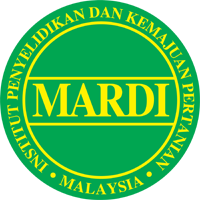C. Devendra and T. Lee Kok Choo
Abstract
This paper represents paper two concerning further studies on Kedah-Kelantan cattle. The objectives in this trial were to further assess and confirm the growth potentials inherent in this breed by increasing the energy supply through the addition 40, 60 and 80% tapioca chips in the concentrate fraction. 36 calves of about 6 to 8 months age and weighing approximately 81 kg, were allocated by weight to three treatments each replicated twice in a completely randomised design. They were group fed on Napier grass (Pennisetum purpureum) ad libitum and with one or other of the three concentrate iso-nitrogenous diets whose main ingredients were copra cake, molasses and urea. The animals were fed to appetite in which the grass and concentrates made up 75 and 25% of the total daily D.M.I. ln treatment 3, urea represented the sole source of dietary N. The trial lasted for 490 days and changes in body measurements,live weight gain and efficiency of feed conversion were measured. There were no statistically significant differences in any of the parameters measured. However, the best daily live weight gain of 312.9 g. confirms the value of 318.7 g. previously published and the higher growth capacity of these cattle than was previously believed. The data in comparison to an earlier study also suggested that up to 60% tapioca chips in the concentrate diet was optimal. There were also statistically significant (P<0.01) correlations between heart girth, height at withers, body length, hip width with live weight. It was also demonstrated in this trial that it is quite feasible to feed urea exclusively as the N source. The significance of these results on the performance and productivity of Kedah-Kelantan cattle in Malaysia is discussed.
Full Text ( 453 KB )








